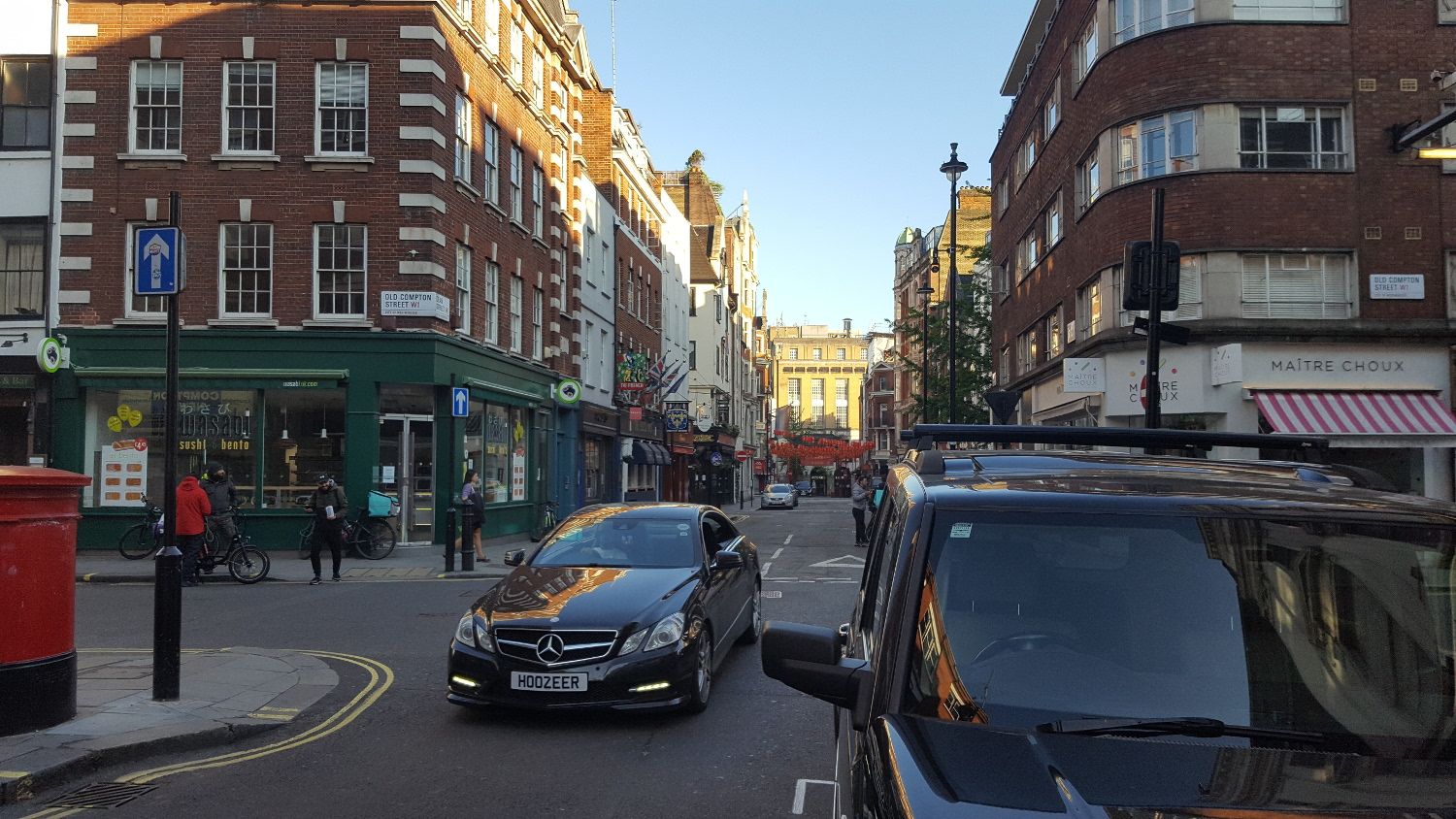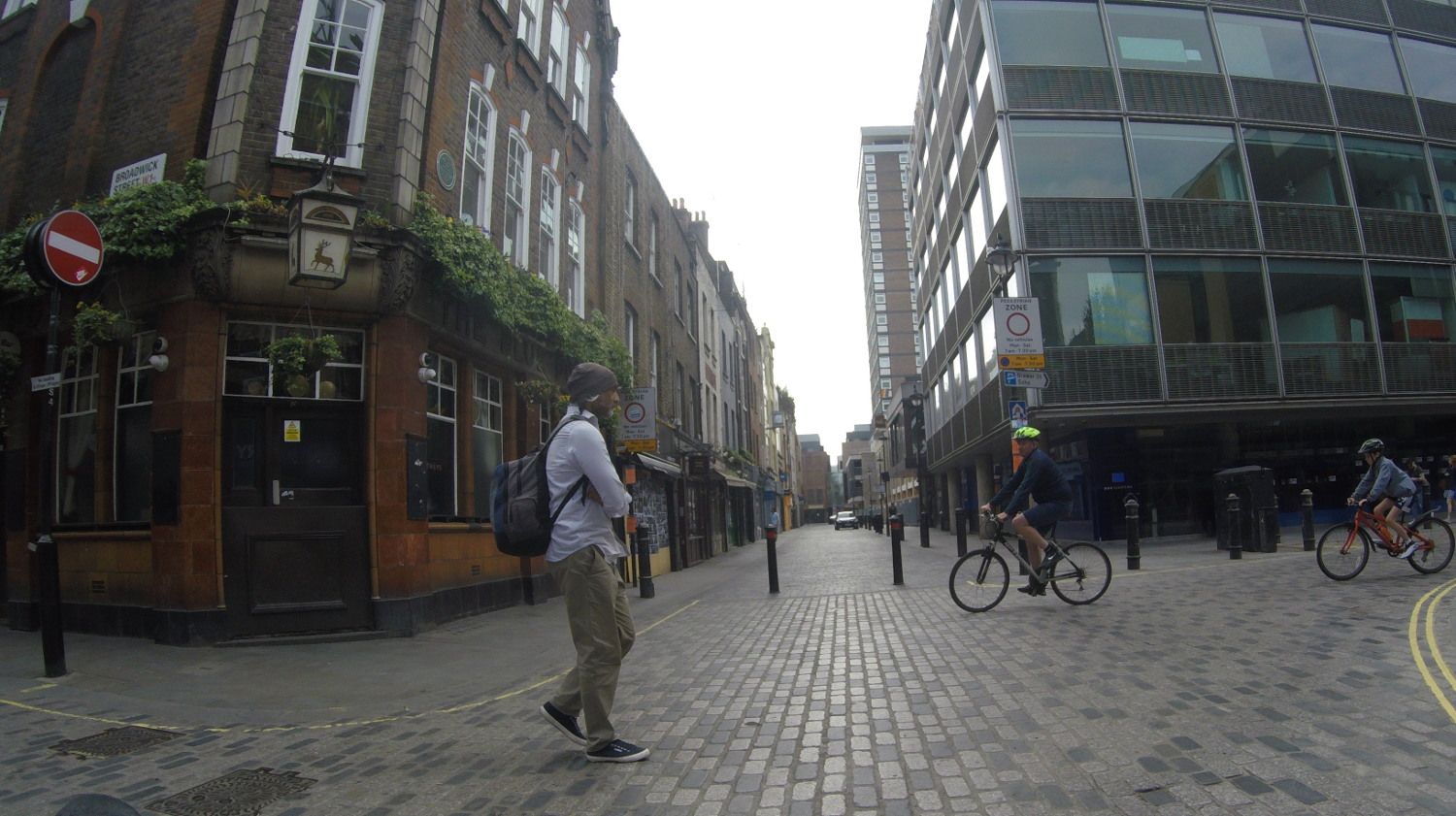Back on our feet, back on the streets in Soho
Westminster Healthy Streets is joining others in voicing a major concern that as lockdown eases, Westminster City Council must act now on Soho.
Soho is an iconic neighbourhood full of bars and cafes and what was a thriving night-time economy – a draw for people from all over London and far beyond – prior to the crisis. For restaurants, and bars, to get back on their feet and recover from this crisis as lockdown eases, many of them with small and narrow premises, little indoor space, and likely social distancing measures to be in place for a long time yet, those businesses will need more outdoor space – for queuing and for tables, ideally. But that can’t happen if Soho stays as currently configured.
Soho, of course, isn’t just a place for late night meals and drinking. It’s also a major employment area – with many of its industries unlikely to be able to see significant levels of homeworking long-term. And it’s a residential area too. It also features simultaneously some of the highest footfall in central London, along some of the narrowest streets with narrowest pavements and high levels of motor traffic and pollution.
Soho, if nothing is done, will not enable businesses to get back on their feet, and see residents and visitors exposed to significant risks. People won’t be able to queue in a socially-distanced manner without either exposing others to Covid-19, or them stepping into busy roads. And of course, it looks increasingly likely that the spread and lethality of the respiratory virus we face is increased with higher levels of pollution. Prior to the crisis, the council and Neighbourhood Plan (see below) recognised Soho as one of the areas facing worst air quality in London. That cannot be allowed to return.

So, how to avoid the pollution, the congestion, the road danger, the social distancing issues and of course to get businesses back and thriving? There’s a fairly simple and obvious solution Westminster council must now move forward on rapidly: get rid of nearly all the motor traffic. Restrict deliveries and servicing to specific hours (for example before the rush hour, or mid-morning?) as many other central districts in European cities do – indeed as small patches of Soho already successfully do around Chinatown and Carnaby Street.
Low-car Soho
Such an approach would allow businesses to mark out queuing spots and put out tables on the pavements the rest of the time, with everyone walking and cycling in the road. And no motor traffic allowed at all for most of the day. This approach would mean that as well as helping businesses and residents, walking and cycling to/from work in the area and through it would be far safer and more pleasant, and pollution levels would be kept much lower. Soho could become an exemplar for central London – with thriving cafes, bars and restaurants, businesses and residents.

Westminster wouldn’t be alone in doing this. The Mayor is already planning similar approaches elsewhere in London with his Streetspace Plan. Elsewhere in the UK, Manchester has plans to do similar during the crisis, as does Cork in Ireland. Beyond, New York, Milan and Paris are among many other cities looking at removing car traffic from areas to enable cafes and restaurants to put out seating.
Of course, if Westminster does nothing, Soho residents and businesses will face the alternative – heavy traffic, narrow pavements, poor air quality, and most people will try as hard as they can to stay away. Surely that’s not what Westminster wants?
We’ll be contacting the council and businesses over the coming months to push this idea. It clearly makes sense to get our amazing businesses back on their feet, and get residents and visitors back on the streets.
Neighbourhood Plan
As you may know, Westminster Council is currently moving forward a Soho Neighbourhood Plan. Here are a few choice quotes from it:
“The objective is to see Soho become recognised by vehicle users and cyclists as a ‘pedestrian priority area’ … Some of Soho’s carriageways and footways are poor and need improvement.
“There has been a substantial increase in the numbers of tables and chairs placed on the highway by hospitality businesses.”
“Westminster City Council should designate Soho inside the major boundary streets of Oxford Street, Regent Street, Shaftesbury Avenue and Charing Cross Road as a 20mph area and also widely sign post it as a ‘Pedestrian Friendly Area’. Consideration should be given to designating certain streets as ‘pedestrian only’ at certain times of the day using such measures as retractable bollards to ensure compliance.”
“Levels of pedestrian use across Soho are already high. Walking strategies by the Mayor and WCC aim to increase the percentage of trips made on foot… Reducing traffic volumes and their speeds is a necessary response. This is best tackled on an area basis so that Soho becomes known to all users as a pedestrian friendly area where vehicular movement is restricted and slow so that over time inessential vehicle journeys reduce.”
Indeed, comments on the consultation indicate a strong preference to go further than the plan currently envisages in removing motor traffic from the area.